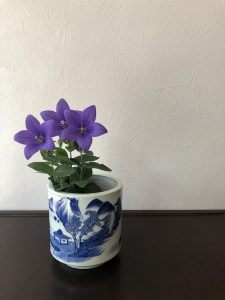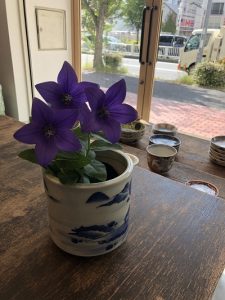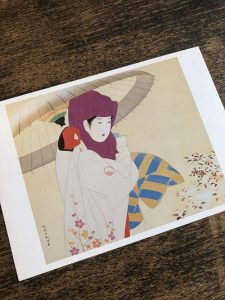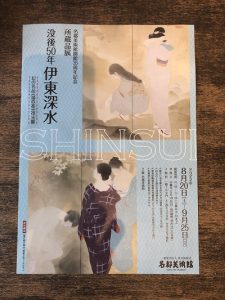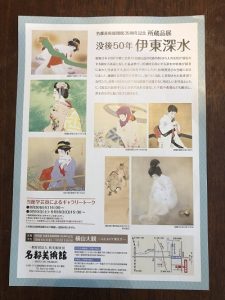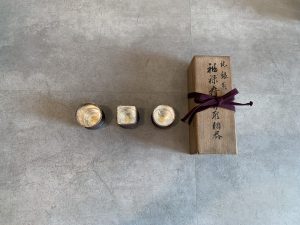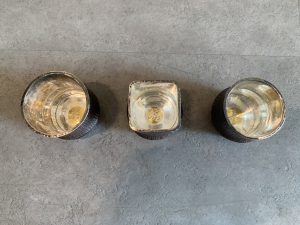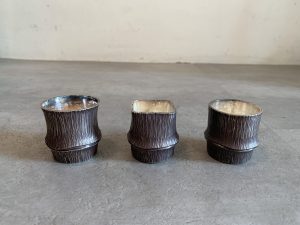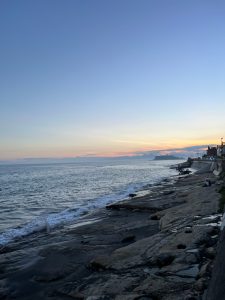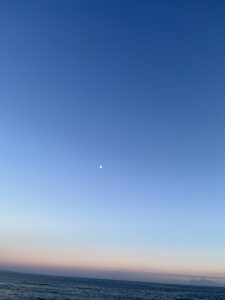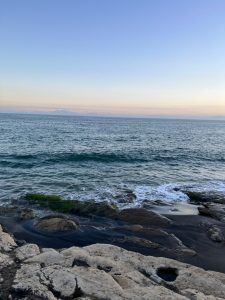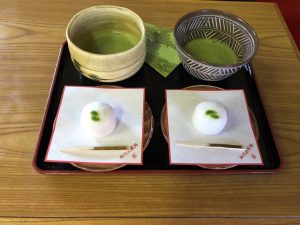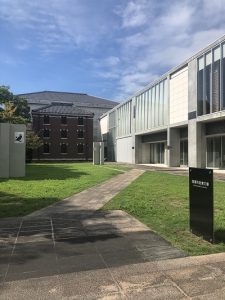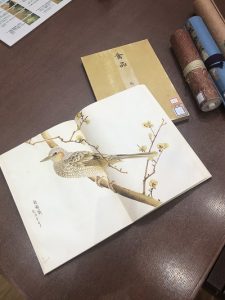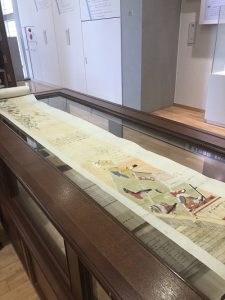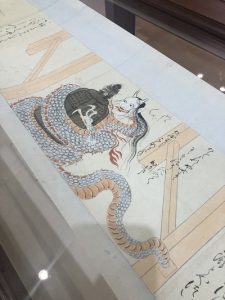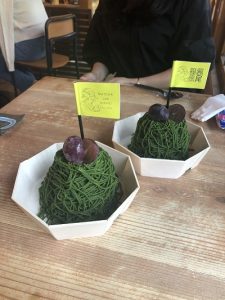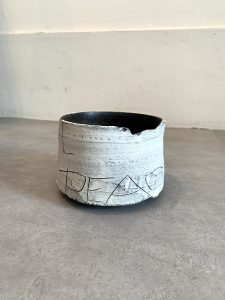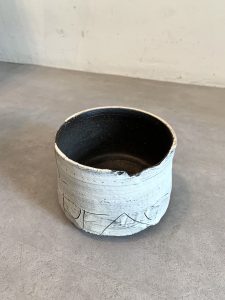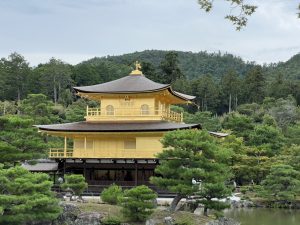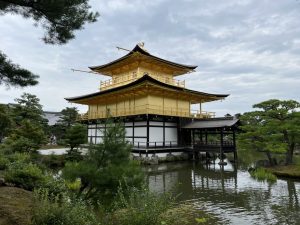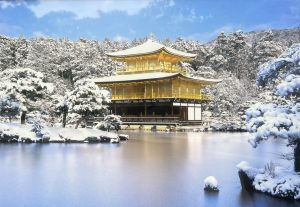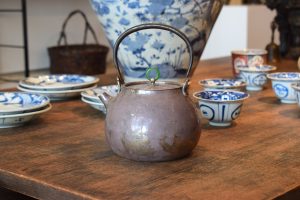みなさまこんにちは、スタッフNでございます。
エリザベス女王の死去により、悲しみに暮れるイギリス国民のニュースが連日放送されておりますね。
あんなに愛されたエリザベス女王を、うらやましく思います。
最近、考えさせられることがあり、たとえ楽でも自分らしさを見失うことはいけないなと感じました。
人生において自分がするべきこと、人生のテーマを思い出しました。
自分の大切なものを奪われていないか、奪っていないか、よく考えてみたいと思います。
さて、商品紹介ページに掛軸、山本梅荘作「水仙」追加致しました。
山本梅荘は、1846-1921 明治-大正時代の日本画家でございます。
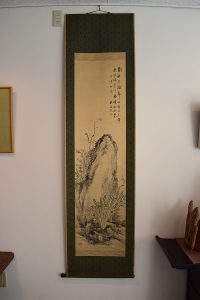
弘化(こうか)3年8月13日生まれ、貫名(ぬきな)海屋,三谷雪崦(せつえん)に文人画をまなび,郷里愛知県半田にもどって中国の古画を手本に修業をつみます。
山水画にすぐれ,吉嗣(よしつぐ)拝山,児玉果亭とともに地方の三大家といわれました。
大正10年2月24日死去。76歳でございました。
名は(“馬へん”に「冏」)。字(あざな)は子埜。通称は倉蔵。作品に「夏景山水」などがございます。
ここで掛軸について調べてみました。
掛軸(かけじく)とは、書や東洋画を裂(きれ)や紙で表装したものでございます。
日本では床の間などに掛けて鑑賞し、「床掛け」と言われることもございます。
後述のように、掛け軸と同様な方法で保管・鑑賞される書画は中国美術に古来存在致します。
仏教を広めるための道具として日本に流入した後、日本の文化と融合し、室内装飾で重要な役割を果たしております。
「床掛け」に近い掛軸としては、茶道の茶室内で用いる禅語などを書いた、やや細い「茶掛け」がございます。
それ以外では、仏壇の中で使う「仏掛け」があり、本尊や脇侍の絵像が描かれていたり、名号・法名軸に仕立てられたりしております。
現代においても、昔の掛け軸が文化財として保護・展示されていたり、骨董として収集・売買されたり、肉筆や印刷で新たに制作されたりしています。
- 掛軸の始めりは、中国の北宋時代に掛物として掛軸が用いられておりました。
- 「掛けて拝する」事に用いられ、礼拝用の意味合いが強くあったと思われます。
- 桐箱に入れると持ち運びに容易である事と、比較的複数生産が可能であったため、掛軸は仏教の仏画用にまず普及を始めました。
- 日本では、すでに飛鳥時代に掛軸が仏画として入ってきていますが、鎌倉時代後期に禅宗の影響による水墨画の流行から掛軸も流行していきました。
- この流行により、掛軸は「掛けて拝する」仏教仏画の世界から、花鳥風月の水墨画など独立した芸術品をさらによく見せる補完品として発達していきました。
- 室町時代以降、「茶の湯」の席で座敷の「床の間」にも水墨画の掛軸が多く見られるようになりました。
- 千利休が掛軸の重要性を言葉にするようになると、茶を愛する人達により掛軸が爆発的に流行するようになりました。
- 来客者、季節、昼夜の時間を考慮して掛軸を取り替える習慣が生まれました。
- 来賓時、その場面の格式などを掛軸で表現することが重要視される考え方が生まれたそうです。
- 真の(さらに真、行、草)、行の(さらに真、行、草)、草の(さらに行、草)などがございます。
- 江戸時代に明朝式表具が日本へ入り、文人画には文人表装などで掛軸が華やいでいきました。
- それと同時に、表具の技術技巧が著しく発展を遂げました。
- また、大和錦・絵錦唐織など複雑な文様の織物が好まれ、西陣など織物産地で次々生まれていきました。
- 18世紀には、江戸を中心とする狩野派とは別軸で京都画壇が栄えました。
- 日本画も楽しむという価値観を持った人達に支持され、掛軸もそれにつれ、芸術価値を高めていきました。
- 肉筆浮世絵で花開きました。
- 明治・大正期は日本画の隆盛により、掛軸もさらに大きく飛躍していきました。
- 昭和に入ると、官公庁主催であった「文展」(現:日展)と「日本美術院」などの台頭により日本画の隆盛期を迎えました。
- 現在は非常に質の高い作品を身近に楽しめるだけの環境が整っており、日本が誇れる伝統と文化のひとつを担っています。
- 一般家庭における床の間は、家族の心の拠り所であり、ご来訪のお客様をもてなす大事な場所だとされており、家主の思いを来客に伝え、先人の想いを子孫に伝え、また、日本人の長い歴史に培われた「美」を表現する大切なお道具となりました。
仏画、肉筆浮世絵、山水画、花鳥画、墨蹟、古筆、色紙、短冊、画賛、手紙である「消息」、巻物を切り取った一部である「断簡」などが表装され、掛軸となります。
連作となる複数の書画を同じ表装で仕立てたものを「対幅」(ついふく)と呼びます。
対幅には柿栗図や竜虎図といった双幅、観音・猿・鶴などを描いた三幅対、四季を描いた四幅対、12ヶ月を描いた十二幅対などがございます。
「床掛け」以外の掛軸には、仏壇の中に掛ける掛軸がございます。
本尊や脇侍の絵像、名号・法名軸があります。
庶民向けに簡素、安価に製造・販売される掛軸もあり、北関東ではかつて、生まれた子供の初正月に掛け軸絵を贈る風習がありました。
初節句の祝い品とした地域もあり、絵柄は七福神などのほか、男児向けには武者や軍人、女児には美人画が好まれたといいます。
主な産地は栃木県佐野地方で「佐野掛地」と呼ばれました。
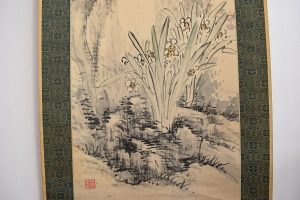
掛軸の様式は茶道と共に確立しました。
座って見上げるときに美しく見えるように寸法が定められており、床の間の大きさや畳の大きさを考慮して作られています。
一般に関東では「上一文字」の丈が「下一文字」の丈の2倍、「天」の丈が「地」の丈の2倍といったように、上部と下部の比率が2対1になっているが、関東よりも畳の大きな関西では、2対1よりも上部を若干短めに作られます。
表装の材質として紙あるいは、金襴、銀欄、緞子(どんす)、紗(しゃ)といった裂(きれ)が用いられます。
「一文字」と「風帯」は共裂(ともぎれ)が用いられ、「中廻し」(ちゅうまわし)には別の素材が用いられ変化をつけています。
通常、「一文字」に最上の素材が用いられます。
これらの裂の取り合わせが画面を一層引き立てます。
- 大和表具
- 図で示した様式。上(天)・中廻し・下(地)の三段に分かれ、上には風帯という帯状のものを一対下げます。最も一般的な様式で。ございます
- 文人表具、袋表具
- 大和表具の上下(天地)と風帯を略し、中廻しの上側と下側を伸ばした様式でございます。
- 茶掛表具、利休表具
- 中廻しの幅を狭めた様式で、茶席などに用いる表具の様式です。
- 本尊表具、仏表具、神聖表具
- 上下の裂で中廻しの左右の外側をも囲むようにした様式は、神仏に関するものについてのみ用います。
軸の材料には象牙、紫檀、カリン、堆朱(ついしゅ)、水晶などが用いられるが、画題により、南画には木製の軸端、仏画には金属、水晶の軸端などが選ばれます。
また、書画を表装して掛軸に仕立てることを軸装といいます。
掛軸は自分自身の環境を表しています。
自分自身は掛軸の本紙部分、本紙には目に映る四季の移ろいゆく風景や花々、訪れた人や家族への思い、自分への戒めなどが描かれています。
- 本紙の上には天、そして半月で月を表し、風帯が風を表す。
- 木々に降り注いだ雨が風になびき露となる。
- その露が集まり川となり、土壌や木々を育む。
- 本紙より下には地があり、軸木、軸先(天然木及び陶器)で土壌や木々を表現する。
掛軸を掛ける際には、先端がY字状あるいはU字状になっている矢筈あるいは掛物棹と呼ばれる道具を用います。
フックや釘などが高い位置にある場合には、高さを調節可能な自在掛を介して掛けます。
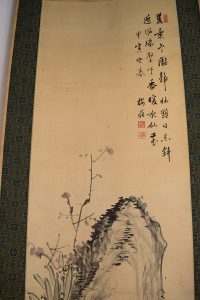
- 掛ける手順
-
- 巻緒(掛軸の外側に巻かれた紐)を解いて掛緒(掛軸の上部に有る紐)の右側に寄せる。
- 掛軸を左手に持ち、右手で矢筈を持つ。矢筈の金具を掛緒に掛ける。
- 掛緒を釘やフックに掛け、ゆっくりと広げ下げる。
- 下げ終わったところで左右のバランスを取る。風帯が有れば下に広げる。必要に応じて風鎮を軸先に掛ける。
- 外す手順
- 可能ならば2人で行うのがいいです。
- 1人で行う場合は、あらかじめ矢筈は壁に立てかけておきます。
- 両手で軸をゆっくりと巻き取る。きつく巻くと掛軸を痛める。
- 本紙を巻き込んだあたりで、左手で掛軸を順手に持ち、右手で矢筈を持ち、掛緒を釘などから外す。
- 掛軸を折らないよう注意しながら上部を下に降ろし、矢筈を外して置く。そして最後まで巻き取る。
- 風帯のある掛軸の場合、まず向かって左手側の風帯を右手側の風帯の下に曲げ込み、右手側の風帯を左手側の風帯の上に載せるように曲げる。風帯の先が余る場合には折り目に合わせて曲げる。
- 巻紙(幅5 – 7cmぐらい、長さ20 – 25cmぐらいの紙)がある場合にはそれの一端を掛軸に巻き込む形で巻き付ける。
- 掛軸を左手に、巻緒を右手に取り、巻緒を(掛軸を巻いてきたのと同じ向きに)左から右に3回巻く。仏画・名号等では巻緒が長めになっているので、それ以上巻く場合がある。巻緒の右端で輪を作って掛緒の右下からくぐらせ、左下に通す。
- 揉紙(包み紙)で包み、軸箱に納める。
掛軸は湿気や乾燥に弱いため、桐箱などに収めて温度変化の少ない場所に保管すると良いです。
桐箱には香木等を用いた防虫香を共に納めます。
ナフタレン等の防虫剤は軸先を痛める場合があります。
掛軸は湿度の高い場所に保管すると、しみ、むし、かび、などの原因になります。
また、汚れや傷などによって大切な美術品の価値も半減してしまいます。
掛軸は保存と取扱いに注意すれば永く愉しむことが出来ます。
掛軸の収納方法が大きく分けて3つあります。
- 桐箱収納
- 桐材は軽くて丈夫で、保湿・耐火性が高いため、骨董品や高級品を保存するのによく使われます。
- また、桐箱は内部の湿度を一定に保ち、虫を寄せ付けない成分を発しているため、掛軸を保存するのに最適だといわれます。
- 二重箱収納
- 桐箱の表面に塗箱に収納することにより、さらに防湿、防虫効果を高めます。
- 太巻収納
- 掛軸をしまう時の注意点は、きつく巻きすぎないことです。
- 太巻といわれる桐の芯材を軸棒に取り付けて巻くことにより、掛軸をしまう時に自然と巻きが柔らかくなり、本紙を折れにくくします。
普段なじみのない掛軸でしたが、とても勉強になりました。
おうちに眠っている掛軸ございましたら、是非お譲りくださいませ。
ではでは
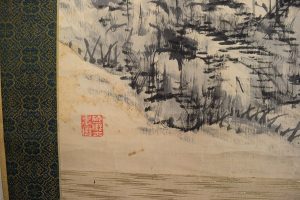
Hello everyone, this is Staff N.
The news of the British public mourning the death of Queen Elizabeth is broadcast every day.
I envy Queen Elizabeth who was loved so much.
Lately, something has made her think, and even if it’s easy, she shouldn’t lose sight of who she is.
She remembered what she should do in life, the theme of her life.
I would like to think carefully about whether or not I have been robbed of something important to me.
Well, I added a hanging scroll, “Daffodil” by Umeso Yamamoto, to the product introduction page.
Baisou Yamamoto is a Japanese painter from 1846-1921 Meiji-Taisho period.
Born on August 13, 1888. Learned literati painting from Kaiya Nukina and Setsuen Mitani, and returned to his hometown of Handa, Aichi Prefecture, to study old Chinese paintings as models. I will pick up
He excelled in landscape painting, and was said to be one of the three great local painters along with Yoshitsugu Haizan and Kodama Katei.
Died on February 24, 1925. He is 76 years old.
His name is (“Horse” to “冏”). His character (Azana) is Kono. His nickname is Kurazo. Some of his works include “Natsukage Sansui”.
Here I tried to find out about the kakejiku.
Kakejiku is a piece of paper or calligraphy that is mounted on a piece of paper.
In Japan, it is sometimes called “alcove” because it is hung on the alcove for viewing.
As described later, paintings and calligraphy that are preserved and appreciated in the same way as hanging scrolls have existed in Chinese art since ancient times.
After being introduced to Japan as a tool to spread Buddhism, it has been integrated with Japanese culture and plays an important role in interior decoration.
As a hanging scroll that is similar to the “alcove”, there is a slightly thin “chakake” that has Zen words used in the tea room of the tea ceremony written on it.
Other than that, there is a “Buddha-gake” that is used in the Buddhist altar, and there are pictures of the principal image and attendant samurai, and it is tailored to the myo and dharma axis.
Even today, old hanging scrolls are protected and exhibited as cultural assets, collected and sold as antiques, and newly created by handwriting or printing.
Kakejiku was first used as a hanging scroll in the Northern Song Dynasty of China.
It was used for “hanging and praying”, and it is thought that it had a strong meaning for worship.
Kakejiku first began to spread for use in Buddhist paintings because it was easy to carry around in a paulownia box and relatively multiple production was possible.
In Japan, hanging scrolls were already introduced as Buddhist paintings in the Asuka period, but in the latter half of the Kamakura period, ink painting became popular due to the influence of Zen Buddhism.
As a result of this trend, kakejiku developed from the world of Buddhist and Buddhist paintings to be hung and worshiped as a complement to stand-alone works of art such as ink paintings of Kachofugetsu.
From the Muromachi period onwards, hanging scrolls with ink paintings began to be seen in the alcoves of tatami rooms during tea ceremonies.
When Sen no Rikyu began to speak about the importance of hanging scrolls, the popularity of hanging scrolls exploded among tea lovers.
A custom was born to change the hanging scrolls according to the number of visitors, the season, and the time of day and night.
It is said that the idea that it is important to express the formality of the scene with a hanging scroll when a guest is present was born.
True (further true, row, grass), row (further true, row, grass), grass (further row, grass) and so on.
In the Edo period, Ming Dynasty mountings were introduced to Japan, and hanging scrolls became popular with literati paintings.
At the same time, the technical skills of mountings have developed remarkably.
In addition, textiles with complex patterns such as Yamato Nishiki and Enishiki Karaori were favored, and they were born one after another in textile production areas such as Nishijin.
In the 18th century, the Kyoto art world flourished on a separate axis from the Kano school, which was centered in Edo.
It was supported by people who valued enjoying Japanese paintings, and along with that, kakejiku also increased its artistic value.
It blossomed with hand-painted ukiyo-e.
During the Meiji and Taisho periods, the popularity of Japanese-style paintings made kakejiku even more popular.
Entering the Showa era, the rise of the Bunten (currently the Nitten) and the Japan Art Institute, which were sponsored by government offices, ushered in a period of prosperity for Japanese painting.
Today, we have an environment where we can enjoy extremely high-quality works close at hand, and it is one of the traditions and cultures that Japan can be proud of.
The alcove in a typical home is the heart of the family, and is considered an important place to entertain guests. It has become an important tool to express the “beauty” that has been cultivated in the long history.
Buddhist paintings, hand-painted ukiyo-e, landscape paintings, bird-and-flower paintings, calligraphy, old calligraphy, colored paper, strips of paper, paintings, shosoku, which are letters, and dankan, which are parts of scrolls, are mounted and hung.
A series of paintings and calligraphy made with the same mounting is called tsuifuku.
There are double scrolls such as persimmon chestnut paintings and dragon and tiger paintings, three paintings depicting Kannon, monkeys, cranes, etc., four paintings depicting the four seasons, and twelve paintings depicting the 12 months.
There is a hanging scroll that is hung inside the Buddhist altar.
There are principal images, images of attendant samurai, names and statutory scrolls.
There are also hanging scrolls that are simple and inexpensive to manufacture and sell for the common people, and in the northern Kanto region, there used to be a custom of giving hanging scroll paintings to children on their first New Year.
In some regions, it was used as a gift for the first festival, and it is said that, in addition to the seven deities of good fortune, the designs were popular for boys, warriors and soldiers, and for girls, paintings of beautiful women.
The main production area was called “Sano Kakeji” in the Sano region of Tochigi Prefecture.
The style of hanging scrolls was established together with the tea ceremony.
The dimensions are determined so that it looks beautiful when you sit down and look up, and it is made considering the size of the tokonoma and the size of the tatami mats.
Generally, in the Kanto region, the length of the upper part is twice the length of the lower part, and the length of the upper part is twice the length of the lower part. However, in Kansai, where the tatami mats are larger than in the Kanto region, the upper part is slightly shorter than the 2:1.
As a material for the mounting, paper or broken materials such as gold brocade, silver column, donsu, and gauze are used.
“Ichimonji” and “Kazetai” are made of two different materials.
Usually, the best material is used for “one character”.
The combination of these cracks enhances the screen even more.
Yamato Mounting
Style shown. It is divided into three stages, upper (heaven), middle mawashi, and lower (ground). in the most common fashion. Thank you
Literary mounting, bag mounting
It is a style that abbreviates the top and bottom (top and bottom) and wind obi of Yamato mounting, and extends the upper and lower sides of the nakamawashi.
Chakake mountings, Rikyu mountings
This style narrows the width of the nakamawashi, and is a style of mounting used for tea ceremonies.
Honzon Mounting, Buddhist Mounting, Sacred Mounting
The style in which the upper and lower splits surround the left and right sides of the nakamawashi is used only for items related to Shintoism and Buddhism.
Ivory, rosewood, Chinese quince, tsuishu (red lacquer), and crystal are used as materials for the shafts. Depending on the theme, wooden shaft ends are selected for Nanga paintings, while metal and crystal shaft ends are selected for Buddhist paintings.
Also, the process of mounting paintings and calligraphy on a hanging scroll is called scrolling.
The hanging scroll represents one’s own environment.
I myself am the main paper part of the hanging scroll, and on the main paper, I can see the changing scenery and flowers of the four seasons, my feelings for the people who visited and my family, and the commandments to myself.
On the paper, the sky is represented, the half moon represents the moon, and the wind zone represents the wind.
The rain falling on the trees blows in the wind and turns into dew.
The dew gathers and becomes a river, which nourishes the soil and trees.
There is a ground below the main paper, and the soil and trees are expressed with shafts and shaft tips (natural wood and pottery).
When hanging a hanging scroll, a tool with a Y-shaped or U-shaped tip called a yahazu or kakemono-sao is used.
If hooks, nails, etc. are in a high position, hang them via a height-adjustable free hanging.
hanging procedure
Untie the makio (a string wrapped around the outside of the hanging scroll) and bring it to the right side of the kakeo (a string on the top of the hanging scroll).
Hold the hanging scroll in your left hand and the arrow hazu in your right hand. Hang the metal fittings of Yahazu on the hanging.
Hang the kakeo on a nail or hook and slowly spread it down.
Balance left and right after lowering. If there is a wind belt, spread it downward. If necessary, hang a windmill on the shaft tip.
Procedure to remove
It’s best to do it with two people if possible.
If you are doing it alone, lean the yahazu against the wall in advance.
Slowly wind the shaft with both hands. Tight winding will damage the hanging scroll.
When the paper is rolled up, hold the hanging scroll with your left hand, hold the arrowhead with your right hand, and remove the hook from the nail.
Take care not to break the hanging scroll, lower the upper part, and remove the arrowhead. and wind up to the end.
In the case of a hanging scroll with a wind belt, first bend the left hand wind belt under the right hand wind belt, and then bend the right hand wind belt over the left hand wind belt. If the tip of the wind belt is left over, bend it along the crease.
If you have a roll of paper (about 5-7 cm wide and 20-25 cm long), wrap one end of it around the hanging scroll.
Take the hanging scroll in your left hand and the winding string in your right hand, and wind the winding string three times from left to right (in the same direction that the hanging scroll was wrapped). In Buddhist paintings and myogo, the winding cord is longer, so it may be wound longer. Make a loop at the right end of the cord, pass it through the lower right corner of the cord, and pass it through the lower left corner.
Wrap it in kojishi (wrapping paper) and put it in the axle box.
Since the hanging scroll is vulnerable to moisture and dryness, it is better to store it in a paulownia box and store it in a place where the temperature does not change much.
The paulownia box contains an insect repellent incense made from fragrant wood.
Insect repellents such as naphthalene may damage the shaft tip.
If the hanging scroll is stored in a place with high humidity, it may cause stains, worms, mold, etc.
In addition, the value of important works of art is halved due to dirt and scratches.
A hanging scroll can be enjoyed for a long time if it is stored and handled with care.
There are three main ways to store hanging scrolls.
paulownia box storage
Paulownia wood is light, strong, highly moisturizing and fire resistant, so it is often used to preserve antiques and luxury items.
In addition, the paulownia box maintains a constant humidity inside and emits an ingredient that repels insects, so it is said to be ideal for preserving hanging scrolls.
double box storage
By storing it in a lacquered box on the surface of the paulownia box, the moisture-proof and insect-proof effects are further enhanced.
Futomaki storage
When storing the hanging scroll, be careful not to wind it too tightly.
By attaching a paulownia core called futomaki to the shaft and winding it, the winding becomes soft when the hanging scroll is put away, and the main paper does not easily break.
It was a hanging scroll that I was not familiar with, but I learned a lot.
If you have a sleeping hanging scroll at home, please donate it.
See you soon
*********************
ご実家の整理やお片付けなどをされている方のご相談などが多くございます。朝晩少し涼しい季節となってまりましたが、でくれぐれもご無理のないようになさってくださいませ。風光舎では古美術品や骨董品の他にも絵画や宝石、趣味のお品など様々なジャンルのものを買受しております。
お片付けをされていて、こういうものでもいいのかしらと迷われているものでも、どうぞお気軽にご相談下さいませ。
また風光舎は、出張買取も強化しております。ご近所はもちろん、愛知県内、岐阜県、三重県その他の県へも出張いたします。
まずは、お電話お待ちしております。
愛知県名古屋市千種区・骨董 買取
『古美術 風光舎 名古屋店』
TEL052(734)8444
10:00-17:00 OPEN
#掛軸#古美術風光舎#浮世絵#骨董#買取#古書買取
